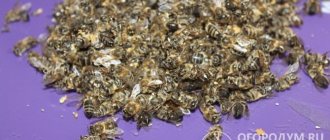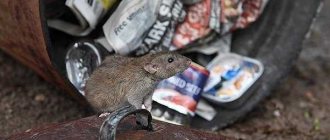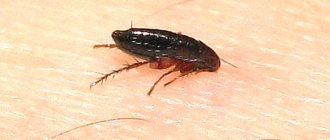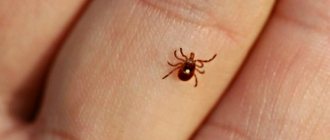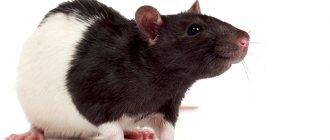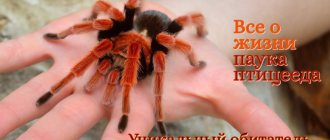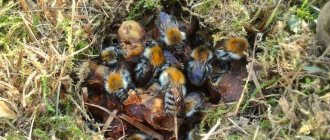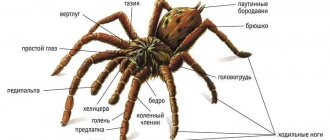Mosquitoes are two-winged insects that cause discomfort to humans in spring and summer. After their bite, local itching, redness, and swelling appear. But these are harmless symptoms compared to the harm mosquitoes that carry diseases such as encephalitis, malaria, and fever can cause to health. To defeat these insects, you need to know the duration and characteristics of their life.
Lifespan of mosquitoes
The lifespan of mosquitoes is influenced by factors:
- sex of the individual;
- air temperature;
- humidity level;
- availability of food.
The average lifespan of males is 3 weeks, females - 2 months. At an optimal temperature of +10...+15 oC, females can live up to 119 days. At +20 °C their lifespan is reduced to 57 days, at +25 °C - to 43 days. These figures are valid if mosquitoes have access to carbohydrate food and the air humidity in their habitat is high.
Attention! At temperatures below +10 ° C, mosquitoes fall into torpor. They can remain in this state until spring. Then the time during which the insect “slept” is added to the lifespan.
How to recognize a fever
West Nile fever is an acute infectious viral disease. Out of 100 people who get sick, four to five people die.
Symptoms of the disease are a sharp deterioration in health, increasing headache, high temperature, tremors in the body, nausea, and vomiting may be observed. Fever is often confused with ARVI, so the diagnosis is determined only in the hospital. The most terrible complication is meningitis, that is, inflammation of the membranes of the brain.
Today, only personal protective equipment - sprays, ointments, plates that repel mosquitoes - will help you protect yourself from mosquitoes. Fever vaccines are in the testing phase.
Life cycle of a mosquito
The life cycle of a mosquito includes 4 stages:
- Egg. After mating with the male, the female looks for a pond with standing water or damp soil, lays eggs and flies away. Each clutch can contain from 30 to 280 eggs.
- Larva. Depending on the air temperature, after 2-8 days the eggs form into larvae that look like small worms. They feed by filtering water from which they extract nutrients. About 1 liter of liquid passes through 1 mosquito larva per day.
- Doll. After about 20 days, the larvae pupate.
- Adult. An adult mosquito appears 5 days after pupation. It will be able to start reproducing within a week.
Adult insects feed on carbohydrate foods – nectar of flowers and juice of plant leaves. Decaying vegetation can serve as a food source. Only females feed on blood.
Panic in southern Russia
The Rostov region is the “homeland” of Russian West Nile fever.
Doctor of Sciences, Head of the Department of Infectious Diseases of the Rostov State Medical University (Rostov State Medical University) Yuri Ambalov was the first domestic virologist to encounter an invisible disease in 1999. Then he and a group of scientists went to the village of Oblivskaya, where a mysterious epidemic was announced.
Scientist Yuri Ambalov has been studying fever for 20 years. Photo: Rostov State Medical University
Patients with high fever and chills were admitted to the hospital. Five people died, three of them were children. Panic arose in the village. “Cholera” posters were hung along the coastline; all vacationers were sent home by police in cotton and gauze bandages.
Article on the topic
Microbes of the future. What new epidemics threaten humanity?
Residents recall that dead silence reigned in the village. Those who could went to their relatives, others did not leave the yard. Neither local nor regional doctors could qualify the disease, so epidemiologists from Moscow came here.
“I remember well what trouble happened in Oblivskaya. We didn't know then that it was West Nile fever. At least 100 people fell ill. I got out of the car, and mosquitoes immediately swarmed me,” recalls Yuri Ambalov. – A few weeks later, a similar thing happened in the neighboring Volgograd region - mosquitoes flew there with the wind. Then this disease was called Crimean-Congo hemorrhagic fever, which is transmitted from a tick bite. But now we understand that it was West Nile fever.”
How long can a mosquito live without blood?
Males and females, eating only plant foods, can live to their maximum lifespan. But in order to lay eggs, the female needs protein and lipids. She receives them from the blood of mammals, including humans. Until a protein source of nutrition is found, she will not be able to lay eggs. Having bitten the victim, it fills its abdomen with blood and flies off to a quiet place to form eggs.
This is interesting! Females of some mosquito species can reproduce without feeding on blood. But the lack of protein food leads to a decrease in the number of eggs laid.
Food preferences
Many people notice that mosquitoes can bite one person twice, bite another completely, and not touch a third at all.
- Insect bites are usually located in areas not covered by clothing, a blanket, or thin fabric.
- Mosquitoes are attracted by the smell of lactic acid, carbon dioxide, and heat. Children are much more likely to suffer from mosquito attacks. This is explained by thin skin, rapid metabolism with intense release of lactic acid and heat.
- The smells of females attract and repel. Men's cologne acts as an effective repellent, while sweet women's perfume attracts the attention of pests.
- More often, people who sweat a lot, suffer from hormonal disorders, and heart disease complain of mosquito bites. Females are attracted to increased levels of estrogen, testosterone, cholesterol, nonanal, and steroids. At risk are pregnant women, people with diabetes, and men who play sports.
How many days does a mosquito live after being bitten?
Some people believe that mosquitoes, like bees, die after being bitten. This opinion is incorrect. After the female drinks blood, she forms eggs and lays them. Then she mates again, looking for a warm-blooded victim. Under favorable conditions, the insect can lay eggs at intervals of 2-3 days. This will continue until the death of the individual.
To combat mosquitoes, people use fumigators, sprays and creams. But these funds are not enough, since the insect population is growing exponentially. To reduce the number of blood-sucking individuals, you need to carry out professional disinfestation of the area. After it is carried out, there are fewer mosquitoes in the area, and the frequency of bites is reduced. This leads to a reduced risk of contracting severe infections.
How much does a person lose from 1 bite?
Mosquito bite
The question of how much blood a mosquito can drink has worried not only the common man, but also many scientists. To determine the approximate volume of liquid drunk, it was proposed to multiply the body weight of the insect by 2 and consider the resulting result as the norm.
On a note!
An ordinary urban bloodsucker weighs only about 2.5 g, so it has been established that it drinks approximately 5.2-5 mg in one bite.
Size matters and that's a fact. But don’t be afraid and imagine how much the largest mosquito drinks at a time. Karamora is not at all interested in biological fluids of either humans or animals. It leads an exclusively herbivorous lifestyle.
How to get rid of mosquitoes?
Mosquitoes can sometimes seem elusive, but people are not powerless against these little vampires. There are several ways to evict mosquitoes from your home and prevent them from coming back:
- Keep your front doors closed as much as possible.
- Use mosquito nets on windows that are properly installed and have no tears or holes.
- If you leave entry doors open to ventilate the area, install a well-fitting door mosquito screen that will keep insects out.
- Since mosquitoes love warm, humid climates, use air conditioning regularly to reduce indoor humidity as much as possible.
- Drain (and renew if necessary) any standing water in vases, flowerpot saucers, etc. inside your home.
- Consider using mosquito repellent in warm, damp areas of your home, such as the laundry room or bathroom.
- Refresh pets' water bowls regularly, wiping them down to eliminate mosquito eggs or larvae before adding fresh water.
Any source of dampness in your home can provide ideal living conditions for mosquitoes. This may apply to the sink drain pipe, especially if the sink is not used very often (as the water stagnates and is not flushed regularly). Indoor plants can also become home to mosquitoes, especially moisture-loving species. Make sure you don't water your houseplants too often; This is not only harmful to plants, but also provides an ideal moist habitat for egg laying and mosquito life.
Mosquitoes in drainpipes
If you suspect mosquitoes are living or laying eggs in your home's drainage system, there are several ways to get rid of these blood-sucking insects. First, try pouring a cup of vinegar down the drain and then cover the drain with a rag soaked in vinegar. This needs to be done for at least a few hours, but better all day if you can stand the strong smell of vinegar. Then rinse the drain thoroughly with hot water.
Another method is to pour a cup of bleach down the drain and flush again with hot water. This method will take less time than with vinegar
However, it must be taken into account that the fumes from bleach can damage plastic pipes, as well as a person's lungs and nasal passages, so this method should be used with caution
Differences between midges and mosquitoes
Blood-sucking insects and midges live near containers or bodies of water. They use these places to lay eggs. But the midge lays about 1,000 eggs within 25–30 days. Therefore, fighting midges is problematic. To reproduce, midges consume a certain amount of blood. To do this, they violate the integrity of the skin. Due to the fact that the midge bites painfully, it prevents people from having a normal rest by the river or near the house. The adult midge disappears immediately after laying its eggs. After all, its main function is reproduction.
Short description
The mosquito belongs to the class of insects, order Diptera, family of blood-sucking mosquitoes.
This creature has lived on the planet for more than 145 million years. It is active in the warm season - at the end of spring, in summer. They are distinguished by a characteristic squeak, an unpleasant bite, which is accompanied by severe pain. In nature, there is a huge variety of mosquito species, which differ in body structure, size, lifestyle, bite pattern and other factors. But many of them prefer to feed on the blood of humans and animals.
To understand what a mosquito looks like, it is worth considering its main appearance features:
- the insect has functioning wings, with the help of which it is able to fly over long distances. The span reaches 3 cm. The top is covered with scales;
- three pairs of thin long legs, at the end there are claws with which they cling to the surface;
- his body is oblong;
- the parasite has a wide chest, an abdomen consisting of 10 segments, which is supported by long legs;
- on the surface of the head there are invisible antennae and a proboscis, with which it pierces the skin and then the wall of a blood vessel, biting and sucking blood.
The squeak mosquito has a gray or brown body color. But there are species of insects that have orange, yellow, green, and red colors. Some members of the family have lush brushes on their wings and legs.
Insects don't fly that fast. The flight speed of a mosquito is 3.2 km/hour. Sometimes wingless varieties are found.
How is a mosquito born?
The life of a mosquito is fleeting, but full of inexplicable mysteries and interesting features. A mosquito develops and appears like this: from an egg - a larva, from a larva - a pupa. An already mature insect flies out of the pupa, ready to mate and eat. Zoologists call such a mosquito an imago. The full life cycle of mosquitoes is described in detail here.
The egg, larva and pupa live in water. They can even be seen in an old barrel in a country garden. The tiny white eggs change color before becoming a larva. This transformation continues for about six to seven days.
The egg becomes a larva unnoticed. But the larva can be easily recognized by its vertical, almost motionless standing under water. The larva is already feeding. Its food is microorganisms. A mosquito larva lives for about four to five days.
The pupa extends breathing tubes above the water. In this way, the pupa breathes for about five days, and then it becomes a full member of nature - a two-winged mosquito. Male mosquitoes are born first.
Are they dangerous for humans?
Despite the fact that the caramora is completely indifferent to blood, the insect poses a serious problem for agricultural land. The following representatives of the order Diptera insects can cause the greatest harm:
- Marsh Centipede;
- Cabbage caramora;
- Autumn ballerina.
These pests have a detrimental effect on plant crops that love moisture. Caramora larvae can destroy a significant part of the crop sown on wet mineral soil and peat bogs. Ballerina can harm berries, legumes, root crops and cereals. Cultivated pastures located near water are most susceptible to mass attack by caramora larvae.
In the summer, centipede larvae are fought, like all pests, with the help of modern insecticidal agents and fall plowing is done. In summer cottages, the same methods are used to combat ballerina. However, if there is no body of water near your site, there is nothing to worry about; the larvae will not be able to damage the crop.
Now you know how dangerous large mosquitoes are.
